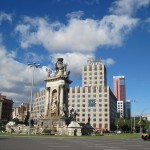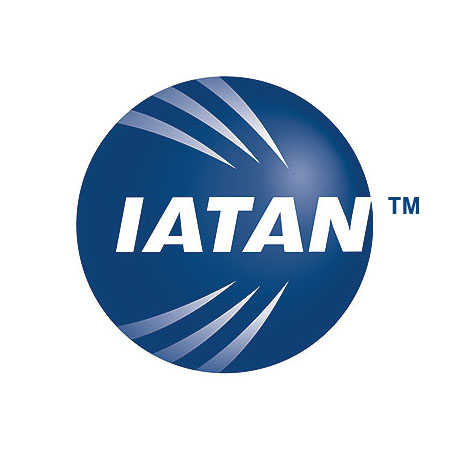China is renowned for its diverse and dynamic culinary tradition due to its vast geography and diverse ethnic populations. Local dishes with their own distinctiveness can be roughly divided into eight regional cuisines. They are Sichuan (Chuan) Cuisine, Guangdong (Yue) Cuisine, Zhejiang (Zhe) Cuisine, Jiangsu (Su) cuisine, Anhui (Hui) Cuisine, Fujian (Min)Cuisine, Shandong (Lu) Cuisine and Hunan(Xiang) Cuisine.
On this gourmet trip, you can taste and experience the splendid food culture of the eight traditional cuisines in ten cities.
Daily Itinerary
Day 1
Arrive Beijing: Attend a welcome party with an introduction of the tour and local culture. Your evening meal includes the local delicacy, Peking Duck. After the meal, check into a traditional courtyard hotel.
Day 2
Beijing:’starting from the ancient landmark of Beijing the Drum Tower, you will have a traditional Beijing breakfast at the famous Yao’s Stewed Liver. The driver of a manpowered tricycle will take you through old Hutongs and tell you stories about each of them. You are welcome to stop and meet local families to experience their daily life. Have a traditional lunch?Zhajiangmian (fried bean sauce noodle), a famous Beijing cuisine. Zhajiangmian is a noodle dish topped with a thick salty black soybean paste, diced pork and vegetables.
In the afternoon, visit the Forbidden City while accompanied by a history teacher. The guide will tell you about the life of Chinese emperors, their historical legacies, and their secrets. South of the Forbidden City is Tiananmen Square, the largest city square in the world. Not far from the Tiananmen Square is Wang Fujing Street, the commercial center of Beijing and home to a myriad of shops and restaurants. Have Shuanyangrou?Beijing-style hot pot for dinner.
Day 3
Beijing Jinan: If you want to experience local morning exercises, you cannot miss the Temple of Heaven’s courtyard. Badminton, daibolo, Tai Chi, Kung Fu, singing Beijing Opera, flying kites and dancing, are all popular morning exercises in Beijing. You will have the chance to learn from local practitioners, who will gladly teach you how to play before departing on the next part of your journey.
Have a traditional Beijing dish for lunch and transfer to Jinan, capital of East China’s Shandong Province and the City of Springs by bullet train. In the afternoon, arrive in Jinan and have an authentic Shandong Cuisine for dinner. Shandong Cuisine is focused on the freshness of its ingredients more than other cuisines. It is also fond of salt flavor, featured with tender, savory and crisp textures.
Day 4
Jinan’suzhou: Visit the Baotu Spring, renowned as the first spring under heaven in Chinese. The spring water spurts out in three fountains, with water droplets spectacularly falling back into the spring. Have Lu Cuisine before boarding a high-speed train heading to Suzhou City in Jiangsu Province.
Day 5
Suzhou:’start the day in Suzhou’s Chinese gardens and silk factories. In the past, it was the national silk center. Many silk masterpieces for the royal family were produced here. You ll have the chance to see the whole process of making silk at the Suzhou First Silk Mill which has been in operation for than 80 years. Visit the Humble Administrator’s Garden, one of the finest Chinese gardens in the country.’su cuisine, belonging to the Jiangsu Culinary region, is famous for its light, fresh and sweet flavor and fresh ingredients. We will have a dinner in the Songhe Lou Restaurant which has offered the classic Su cuisine for more than 250 years.
Day 6
Suzhou Hangzhou(Bus): It is only an hour by bullet train from Suzhou to Hangzhou. Hangzhou is the capital city of Zhejiang Province and is home to Zhejiang cuisine. Zhejiang Province, is known as the land of fish and rice, and its picturesque landscape. Zhejiang cuisine, like the beautiful scenery, wins its reputation for freshness, tenderness, and delicate textures of its dishes with a mellow fragrance. Hangzhou cuisine is characterized by its elaborate preparation and varying techniques of cooking, such as saut ing, stewing, and stir-and-deep-frying. Hangzhou food tastes fresh and crisp, varying with seasoned ingredients.
Day 7
Hangzhou: Today’s sightseeing includes the beautiful West Lake, Lingyin Temple and Longjing Tea garden. And at night, you will enjoy the moonlight along the West Lake.
Day 8
Hangzhou Mount Huang(Bus): Huangshan Mountain is famous for its four wonders: spectacular peaks, odd-shaped pines, hot springs and misty surreal fog. It is one of the most famous mountains and symbolizes the natural beauty of China and contains a preserve full of native animals and plants.
Day 9
Mount Huangshan: In the early morning, watch the sunrise at Huangshan Mountain and then visit other scenic spots. Afterwards, journey down the mountain and visit the Xidi Village. Xidi, listed as the World Heritage Sites by UNESCO in 2000, is an old village with a history of over 900 years. It is famed for her pastoral scenery, well preserved ancient residences with exquisite stone and wood carvings. This region is known for Anhui cuisine which uses only local produce, so the freshness of the dishes is unparalleled. Anhui cuisine focuses on cooking temperature, braising, and stewing. Yams are used to improve taste and sugar candy for freshness. The use of wild herbs is one of Hui cuisine’s notable features.
Day 10
Fly to Xiamen
Day 11
Xiamen: Visit Gulangyu Island, the Garden on the Sea, which is renowned for its delicate natural beauty, ancient relics, and European-style architecture. Stroll along the shoreline of the island and soak yourself in the sunshine and flowers. Enjoy the relaxing atmosphere and delicious local snacks. The local Fujian cuisine consists of three styles, namely Fuzhou, Quanzhou and Xiaomen style. Its history can date back 5,000 years. It is characterized by pickled, sweet and sour tastes, and bright colors. Fujian cuisine is rich in high-quality ingredients, especially delicacies from the mountains and sea.
Day 12
Earth Building (Tulou): Visit local earth buildings (Tulou), traditional dwellings of the Kejia people (Hakka) in the mountainous area of Fujian Province. A Tulou is a large, enclosed and fortified building, most commonly rectangular or circular in configuration. It has very thick load-bearing rammed earth walls between three and five stories high and houses up to 80 families. Tulou has previously been mistaken for missile launch bases by foreign countries due to its colossal and unique shapes. A Tulou’s architecture; structure, multipurpose functions, and rich history have made it a great value scientifically and artistically.
Day 13
Xiamen Guangzhou: Guangzhou is the capital city of Guangdong Province and the home to authentic Guangdong (Yue) Cuisine. Guangdong Cuisine consists of three styles, namely Guangzhou, Chaozhou and Dongjiang style. Guangdong cuisine is famous for its diversity of ingredients. The second feature of Guangdong cuisine is the importance of the sourcing and freshness of the ingredients. Guangdong cuisine is considered light and fresh in flavor. The third feature is creativity in presentation and cooking methods. There are more than 5,400 dishes, 1,000 dim sums and several hundred snacks in this style.
Day 14
Guangzhou: Experience the local morning tea ritual. Drinking morning tea is a custom and popular social activity to enhance friendship and business connections. Many tea houses open as early as 4 AM. Some people have the morning tea with their families as breakfast, while some people leisurely sip to pass time. Traditional morning tea includes a cup of tea and two dim sums (snacks). The popular dim sums are steamed water chestnut cake and sticky rice with chicken. Nowadays, many Western pastries are also on the morning tea table.
Day 15
Guangzhou: Visit the Lingnan Impression Park, which resembles an old town filled with numerous old alleys, local architecture, ancestral halls and folk residences. Have the classic Guangdong cuisine for lunch. Fly to Changsha, the capital city of Hunan Province by bullet train.
Day 16
Changsha: Visit the Yuelu Mountain and relics from the Mawangdui Han Dynasty Tomb. Hunan cuisine consists of cuisines from the Xiangjiang River, Dongting Lake and Xiangxi mountain area. It is known for its dry spicy flavor, fresh aromas, diverse ingredients and deep color. Common cooking techniques include stewing, frying, pot-roasting, braising, and smoking. Night life in Changsha is enthralling which officially starts after 10 PM. Enjoy your late night amongst the local people and the hot and delicious snacks at night market.
Day 17
Changsha Chengdu: Fly to Chengdu. As the capital of Sichuan Province, Chengdu is a famous historical and cultural city. It is the hometown of the giant pandas, and the pace there is relaxed and leisurely. Visit the Chengdu Giant Panda Breeding Base and get a close touch with the adorable Treasures of China.
Day 18
Chengdu:’sichuan cuisine is famous for its distinctive mala (hot and numbing) peppercorns, as opposed to the more subtle Hunan cuisine. Known for the use of chili, pepper, black pepper and fresh ginger, Sichuan Cuisine is one of the most famous Chinese cuisines in the world. Cuisines from Chengdu and Chongqing are the two major branches of Sichuan Cuisine.’stroll through the KuanZhai Alley, a historic preserve district consisting of 45 courtyards in the style of the Qing and Ming. Taste the famous hot and spice pot as well as delicious local snacks. Have a cup of tea in a local tea house and enjoy a traditional tea ceremony. In the evening visit Jinli Old Street and watch a Bianlian opera performance.
Day 19
Chengdu-Shanghai: Fly to Shanghai, China’s most cosmopolitan city. In the evening, enjoy the panoramic Huangpu River with its colonial architectures juxtaposed against the modern Oriental Pearl TV Tower and Jinmao Tower.
Day 20
Shanghai: Here you will explore its history and modern urban lifestyle. Stroll through the beautiful Yuyuan Gardens and the Old Town, appreciate the classic Chinese architecture and taste delicious local snacks.
Day 21
Departure
Social Share
Recent Packages
Essence of Europe
Europe Highlight Tours
Portugal & Spain
Turkey
Best of Italy
What’s Included
- Overnight hotel accomodations for all destinations with meals (as stated).
- Domestic transportation between destinations by either rail, car, or air.
- Taxes, surcharges, and fuel charges for transportation.
- Entry fees to each attraction or sightseeing excursion.
- A local English-speaking tour guide for each city. He or she will also assist with transfers.
Contact Us
- 440 E. Huntington Dr.
Suite 300
Arcadia, CA 91006 - Phone: (626) 802-4843
- Fax: (626) 993-6601
- Email: info@exo-tours.com







